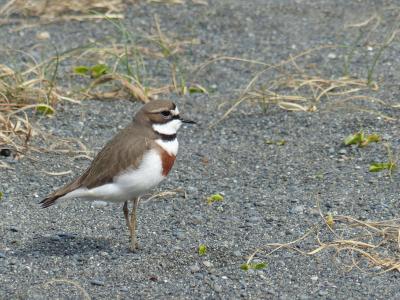Coastal bird survey highlights key risk areas for oil spills

One of Wellington regions banded dotterel which are nationally vulnerable.
Greater Wellington Regional Council conducted a coastal bird survey recently to assess where wildlife would be most affected by an oil spill around our region's coast.
Senior environmental scientist at Greater Wellington Roger Uys says the region needs to be prepared for oil spills and part of that includes looking after our precious wildlife.
The survey, mandated by Maritime New Zealand, saw Wildlife Management International's Nikki MacArthur and Samantha Ray walk the region's 500 kilometre coastline to gather information on locations of coastal birds and the population numbers for each species.
"The survey has given us a much better idea of where our high risk areas would be if an oil spill were to happen," Roger says.
"It has also given us a better insight into how healthy the populations of some of our rare and threatened species are."
Roger says the survey has improved our knowledge of threatened species such as banded dotterel, which are nationally vulnerable, and reef heron, which are nationally endangered.
"The survey has also given us a much better idea of how we should be responding to development applications around the coast."
With the help of the Department of Conservation (DoC) and the harbours team surveys were also done around the off-shore islands.
"Kāpiti Island, Mana Island and Castlepoint showed up as being really important nesting colonies for coastal birds. This informs development concepts at regional council."
Greater Wellington deputy harbour master Patrick Attwood says oil spills occur more often than most people think.
"A lot of the oil that ends up in the harbour comes from the roads. Roads straddle most of our coastline and when a vehicle drips fuel or oil it ends up in our storm water systems which link to our harbours."
Patrick says 80 to 90 per cent of the reports he receives on oil spills actually come from storm water drains.
"Roger has identified sensitive areas along the coastline. If we have a significant spill we now know what sort of wildlife is in each area and where our biggest risks are."
Roger says the survey did not pick up on penguin numbers so that is now his next focus.
"We are working with local penguin experts and DoC to try identify where penguins occur around our coast.
"There are potentially 700 to 1000 penguins around our regional coast and we would like to get a better idea of their location and numbers."
Get in touch
- Phone:
- 0800 496 734
- Email:
- info@gw.govt.nz
